Flying With a Service Dog – The Ultimate Guide
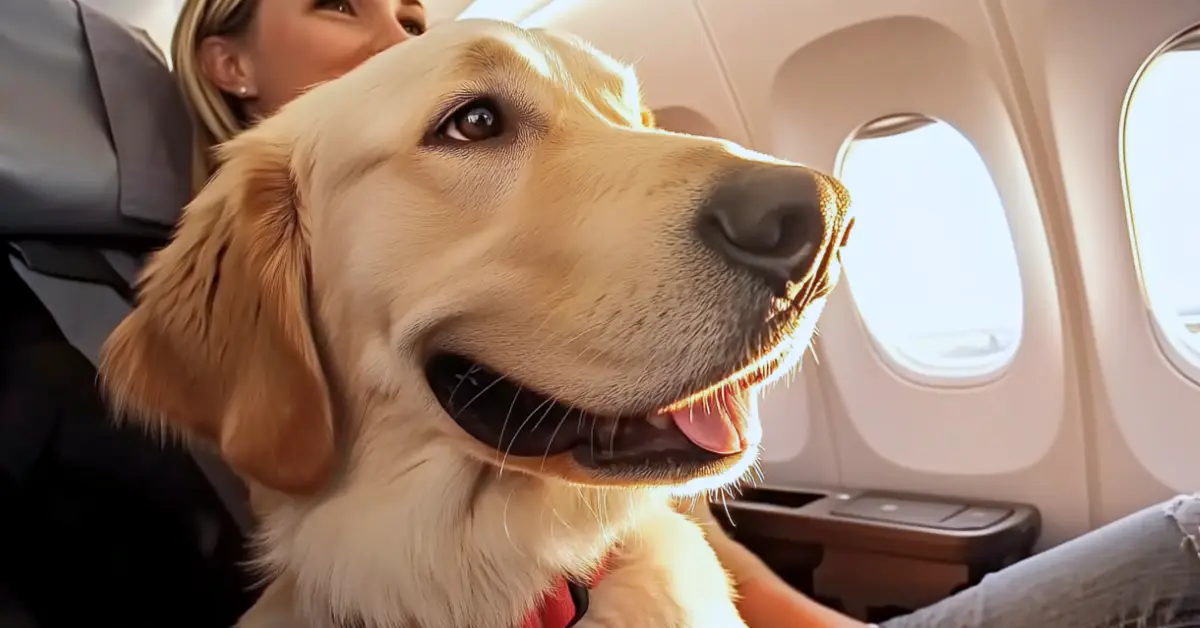
This article was last updated on December 11th, 2024, to reflect the latest updates in the DOT’s rules for air travel.
This is a guide to everything you need to know to travel with your service dog or psychiatric service dog (PSD).
Service dogs (of any size and weight) have a legal right under the Air Carrier Access Act to fly in the cabin, free of charge.
The five steps to flying with a service dog are:
- Make sure your service dog has completed their training and that you have a qualifying ADA disability.
- Notify your airline that you have a service dog when you book your tickets.
- Fill out the DOT’s Service Animal Transportation Form and get it to the airline at least 48 hours before takeoff (don’t worry if you’re booking last-minute — you can bring it to the gate)
- Got a long flight? If it’s over 8 hours, you’ll need to complete the Service Animal Relief Attestation Form
- Pack a harness, leash, or tether — your service dog needs to stay secured during the whole journey
Keep reading to learn all the important details about flying with a service dog, along with practical tips from experienced service dog handlers who are frequent fliers.
Table of contents
- 1. What forms do I have to submit to fly with my service dog?
- 2. How can airline staff verify that I have a service animal?
- 3. What to Expect at the Airport
- 4. Does my service dog need a harness, vest, or ID card?
- 5. Is there a size limit for service dogs on flights?
- 6. Can an airline deny my service dog because it is a particular breed?
- 7. Can I bring more than one service dog aboard?
- 8. What rules apply to my service dog during the flight?
- 9. When is an airline allowed to deny boarding to a service animal?
- 10. What are some other practical tips for flying with a service dog?
- 11. Dealing with Airline Difficulties When Flying With Your Service Dog
1. What forms do I have to submit to fly with my service dog?
To fly within or from the U.S. with a service dog, you’ll need to complete the DOT’s Service Animal Transportation Form. This form must be submitted to the airline at least 48 hours before departure. If the reservation is made within 48 hours of the flight, the form can be shared at the gate.
In the DOT Form, the service dog or psychiatric service dog handler has to make the following certifications:
- The service dog or PSD has been individually trained to do work or perform tasks for the benefit of the passenger with a disability;
- The service dog has been trained to behave properly in public;
- The handler is aware that the service dog must be under their control at all times;
- The handler is aware that if their service dog misbehaves in a way that indicates it has not been properly trained, then the airline can treat the service dog like a normal pet; and
- The handler is aware that they may be liable for damage caused by their service dog’s actions.
You also have to confirm that your service dog has been vaccinated. The form asks for a veterinarian’s name and contact but does not require the vet’s signature.
The DOT Form also asks for the name of the dog’s trainer, which can just be your name if your service dog was trained without the help of another person.
For your reference, a copy of the DOT Transport Form can be found below.
In addition to the DOT Form, there is a separate form for flights longer than 8 hours called the “Service Animal Relief Attestation Form”.
In the Relief Form, the handler must certify that their service dog will either (i) not need to relieve itself while on the flight, (ii) can relieve itself during the flight without creating a health or sanitation issue, or (iii) refrain from relieving itself, or relieve itself without posing a health or sanitation issue (for example, through the use of a dog diaper).
Like the DOT Form, this form is self-certifying but only required for flights longer than 8 hours. A copy of the Relief Form for reference can be found below.
You can only complete the DOT Form if you have a qualifying ADA disability. Psychiatric disabilities also count. Not sure if your mental health condition is eligible? Consider asking for a PSD letter from a healthcare professional.
Wonder if your emotional disorder qualifies for a psychiatric service dog?
Get an assessment by a licensed health professional.
2. How can airline staff verify that I have a service animal?
According to ACAA regulations, here are three ways airline staff can verify your canine companion is a service dog:
- Asking whether the animal is required to accompany the passenger because of a disability and what work or task the animal has been trained to perform.
As a service dog owner, you have a right to privacy. Airline staff can’t interrogate you for specifics about your disability or ask your service dog to demonstrate what they can do. - Observing the behavior of the animal.
Airline staff can observe the general behavior of your service dog to see whether they remain under your control. A service dog can be barred from a flight if it is out of control, barking or growling repeatedly at other passengers or animals, biting, jumping on, causing injury to others, or urinating or defecating in the cabin or gate area.According to the DOT, a dog that engages in these types of disruptive actions demonstrates that it has not been successfully trained to behave in public settings.
- Looking at physical indicators such as harnesses and vests.
Lastly, an airline can look at physical indicators such as harnesses, vests, ID cards, and tags to judge whether the dog is a service dog. Paraphernalia such as tags, vests, ID cards, certificates, and harnesses are used by service dog owners to signal to the public that their service dog is on duty.These accessories are especially helpful for psychiatric service dog owners because their disabilities are invisible and not readily apparent. Having these accessories helps protect service dog owners from intrusive inquiries and unwanted interactions.
However, it’s important to note that service animal paraphernalia is not, by itself, enough to qualify a dog as a service dog. It’s just one factor the DOT says airlines can use to determine whether they are dealing with an authentic service dog or not.
If you want to register your Service Dog so that you have a Service Dog ID card for your personal convenience at the airport, you can order one below.
3. What to Expect at the Airport
Before arriving at the airport, make sure you have submitted the DOT Transportation Form to your airline.
Some airlines have a link on their website to submit the form, while others accept them by email. If you booked a flight within 48 hours of departure, you can bring the form and submit it to an airline agent at the airport.
If you travel with a service dog, it’s a good idea to arrive earlier than usual. You must check in with the airline counter to confirm they have your DOT Transportation Form. Airline staff may also inspect your service dog to ensure it is clean, well-behaved, and under your control. Check out our guide on going through airport security with a dog if you’re doing that for the first time.
While at the airport, it’s a good idea to have a paper or digital copy of your DOT Form in case anyone asks for it.
While at the airport and during your flight, your service dog should be harnessed or tethered at all times. Service dogs that are not fully under their handler’s control can be removed from the airport or plane.
As we’ll discuss in the next section, having service dog accessories at the airport can also be very helpful.
4. Does my service dog need a harness, vest, or ID card?
As we discussed, the DOT allows airline staff to consider items such as harnesses, vests, and tags to determine whether an animal is a service dog. These items are popular with service dog owners because they distinguish their working animals from normal pets.
They help manage uncomfortable interactions with the public and staff members and prevent intrusive inquiries about why the dog is present. These accessories can be especially helpful for psychiatric service dog owners whose disabilities are unseen. They provide an easy way for airport and airline staff and other passengers to recognize that you are boarding with a service dog.
As a reminder, however, these items alone cannot qualify a service dog and are only for fully-trained service dogs. Airlines can weigh the presence of service dog paraphernalia along with other factors to determine whether a dog is indeed a service dog.
5. Is there a size limit for service dogs on flights?
Many service dogs are larger breeds, such as Golden Retrievers or German Shepherds. There is no absolute weight limit for service dogs, but airlines can require that a service animal fit within the handler’s foot space or on the passenger’s lap.
The DOT requires airlines to accommodate larger animals by moving the passenger to another seat within the same service class where the animal can be accommodated, if possible (such as if a seat is next to an empty seat).
If there is nowhere to place a larger service dog comfortably, the airline is required to offer the handler the opportunity to transport the service dog in the cargo hold free of charge or travel on a later flight if there is space available in the cabin for that flight. The airline is not required to upgrade the handler to a different class of service to accommodate your service animal.
Most service dog owners would be vehemently opposed to letting their dogs fly in cargo. Fortunately, many larger service dogs can still be trained to fit into the passenger’s foot space on an airplane.
6. Can an airline deny my service dog because it is a particular breed?
Airlines are not allowed to turn away your service dog just because of its breed. This is especially important for handlers with breeds that sometimes face unfair stereotypes, like:
- Pit Bulls and Pit Bull mixes
- German Shepherds
- Doberman Pinschers
- Rottweilers
- Chow Chows
- Siberian Huskies
- Alaskan Malamutes
- Great Danes
- American Staffordshire Terriers
- Bullmastiffs
The truth is, these breeds can make exceptional service dogs! German Shepherds are known for their intelligence and loyalty, making them excellent mobility assistance dogs. Pit Bulls have the strength and gentleness needed for balance work. Great Danes can be perfect for handlers who need a taller dog for mobility support, while Dobermans often excel at medical alert work due to their attentiveness.
The DOT has made it clear that any breed of dog can be a service dog, and airlines must evaluate each dog as an individual rather than making assumptions. Just because someone once had a bad experience with a particular breed doesn’t mean your highly-trained service dog can be discriminated against.
However, it’s important to understand what airlines can and cannot consider when it comes to your service dog’s behavior:
What Airlines Can’t Do:
- Ban your service dog based solely on its breed
- Require additional documentation just because of your dog’s breed
- Make you muzzle your dog simply because of its breed
- Force your dog to undergo special screening based on breed
- Make assumptions about your dog’s temperament based on breed stereotypes
If you have a service dog breed that faces unfair stereotypes, consider these practical tips:
- Use a vest or harness that clearly identifies your dog as a service animal
- Keep documentation of your dog’s training and good behavior handy (like a Public Access Test Certificate, though this isn’t required)
- If airline staff seem hesitant about your dog’s breed, calmly remind them of the DOT regulations
- Document any interactions where staff seem to discriminate based on breed
Remember, the key factor is your service dog’s behavior, not its breed.
7. Can I bring more than one service dog aboard?
Need to fly with more than one service dog? You can bring up to two service dogs on your flight. This is great news if you have two service dogs that help with different tasks — for example, one dog for psychiatric support and another for mobility assistance.
The catch? Both dogs need to fit in your foot space or on your lap. This can be tricky if you have larger service dogs. If you’re flying with two big pups, here’s what you can do to avoid any issues:
- Book an extra seat if you can afford it
- Try to fly during off-peak times when the plane is less likely to be full
- Ask the airline about flights with more empty seats
Whatever you do, don’t risk having your service dog sent to cargo — most handlers consider this absolutely off-limits, and for good reason. It’s better to plan ahead and make sure both your dogs can stay with you in the cabin.
When booking, immediately inform the airline that you’re traveling with two service dogs. This allows them to help you find the best seating arrangement possible.
8. What rules apply to my service dog during the flight?
During the flight, the airline can require your service dog to be harnessed, leashed, or tethered at all times, even if these items would interfere with your service dog’s work or your disability prevents the use of these items. This is a more stringent approach than the ADA, which allows a disabled person to use voice commands or other signals to control their service dog.
Service dog owners should come prepared for flights with a harness, leash, or tether and anticipate that their service dog will have to be restrained during the flight and at the airport gate.
Again, all service dogs must be well-behaved during the flight and not create any significant disruptions. That means no barking, jumping on others, acting aggressively, or defecating/urinating in the open. Your service dog also can’t block a space that must remain unobstructed for safety reasons, the aisle, or access to the emergency exit.
If your service dog causes any damage to the airplane cabin, you’ll be on the hook to pay for the damages.
9. When is an airline allowed to deny boarding to a service animal?
There are four primary situations where an airline can deny boarding for a service animal:
- The service animal violates general safety requirements.
The most likely example of this issue would be if an animal is too large or heavy to be accommodated in the cabin. - The service animal poses a direct threat to the health or safety of others.
Airlines must make an “individualized assessment” of the service dog in question. They can’t rely, for example, on stereotypes regarding a service dog’s breed.The airline also has to consider whether any mitigating measures can be taken – for example, using a muzzle to silence a barking service dog.
- The service dog causes significant disruption in the cabin or airport gate areas, or its actions indicate it hasn’t been trained properly to be in public.
An airline can view a service dog as not having been properly trained if the service dog is running freely, barking or repeatedly growling at others, biting or jumping on people, or urinating or defecating in the open. - The transportation of the service dog would violate the safety or health requirements of a foreign government.
For international flights, it’s important to make sure you understand the foreign country’s rules for the arrival of service dogs. For example, some countries may require information regarding the service dog’s health and vaccination status. - The passenger has not completed the DOT’s Transport Form or Relief Form.
As previously discussed, service dog owners will need to submit the DOT’s Transport Form and the Relief Form for longer flights before boarding the flight. If you’re on a long, multi-leg flight with your service dog, you might find our guide on finding dog-friendly foods at the airport helpful.
If an airline refuses to accommodate your service dog for any reason, they must provide a written statement to you describing those reasons within 10 days.
10. What are some other practical tips for flying with a service dog?
The first time flying with your service dog or PSD can be a nerve-wracking and intimidating experience. But fear not, thousands of service dog owners travel every day without incident, and federal rules protect your rights.
These are some practical tips and precautions to keep in mind to help ensure you have a smooth trip:
- Tip #1:
If necessary, visit your vet before your travel date to ensure your dog is healthy and up-to-date on vaccinations. The DOT’s Transport Form will require you to certify your service dog is vaccinated and will also ask for your vet’s contact information. - Tip #2:
Vests, tags, ID cards, harnesses, and other accessories can help you navigate a busy airport and crowded airplane cabin. - Tip #3:
Avoid overfeeding your service dog before a flight, as they could suffer from air sickness, leading to an unpleasant accident during the flight. - Tip #4:
Let your airline know about your service dog and submit the DOT’s Transport Form as soon as possible. - Tip #5:
For first-timers, arriving at the airport a few hours early can ease some of the anxiety, especially if there are unexpected obstacles like a long security line or changed gates. Many airports also have stations where your service dog can have an opportunity to relieve itself one last time before boarding. Click here for our guide on keeping your service dog calm during flights. - Tip #6:
Remember to bring a harness, leash, or tether – the airline can insist that your service dog is properly restrained and under your control at all times. - Tip #7:
Remember to pack all your pet’s grooming products, necessary medication, food, treats, water, and food dishes in suitably accessible compartments.
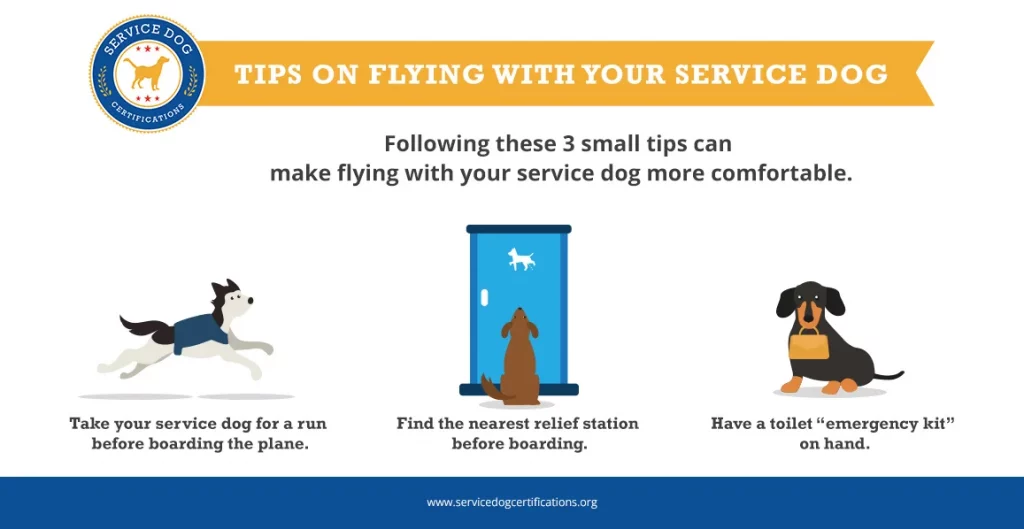
Share this image on your site
11. Dealing with Airline Difficulties When Flying With Your Service Dog
Flying with a service dog has become more complicated lately, with some handlers reporting increased scrutiny and difficulties at airports. Other passengers have noted facing obstacles with airlines using third-party companies to screen their service dog status. While the DOT rules are clear about service dog rights, sometimes airline staff are not properly trained on these regulations, which can lead to frustrating situations.
Be prepared for these situations by knowing your legal rights:
- Airlines cannot deny your service dog based on breed
- They cannot require extra documentation beyond the DOT forms
- They cannot ask about your specific disability
- They can only ask two questions:
- Is the service dog required because of a disability?
- What work or task has the dog been trained to perform?
If an airline employee insists on seeing additional documentation beyond the DOT Form, you can say the following:
“I’ve submitted the required DOT Service Animal Transportation Form, which is the only documentation required by federal regulations. Could you please direct me to your Complaints Resolution Official if you have concerns?”
If they question whether your dog is really a service dog:
“My dog is individually trained to perform specific tasks to assist with my disability. The law allows you to ask what tasks they perform, and I’m happy to explain those, but you cannot ask about my specific disability.”
If they try to deny boarding based on your dog’s breed:
“The Department of Transportation regulations specifically prohibit breed-based discrimination for service dogs. My dog is well-trained and under my control. Would you like me to demonstrate some of their training?”
If staff seem unsure about the rules:
“I understand service dog regulations can be tricky. Would you like to review the current DOT guidelines together? I have a copy we can look at.”
If they try to separate you from your service dog or suggest cargo:
“Federal law requires airlines to accommodate service dogs in the cabin with their handlers. Separating me from my service dog would prevent them from performing their essential tasks. Could we look at alternative seating arrangements?”
If you face difficulty with any airline staff, stay calm and polite, even if frustrated. Getting upset rarely helps resolve the situation.
If you’re ultimately denied boarding, request the denial in writing: “I understand you’re required to provide a written explanation for the denial within 10 days. Could you confirm where this will be sent?”
Then, consider filing complaints with the Department of Transportation, the airline’s customer service department, and the airline’s disability desk. Document any expenses incurred due to the denial as well.
Remember, sometimes access issues stem from staff confusion about current regulations rather than intentional discrimination. Being prepared with documentation and remaining professional can help resolve most situations quickly.
Register your Service Dog and order your custom Service Animal Identification Card and Certificate
About the Author: The writing team at Service Dog Certifications is made up of folks who really know their stuff when it comes to disability laws and assistance animals. Many of our writers and editors have service dogs themselves and share insights from their own experiences. All of us have a passion for disability rights and animals.
Related Articles
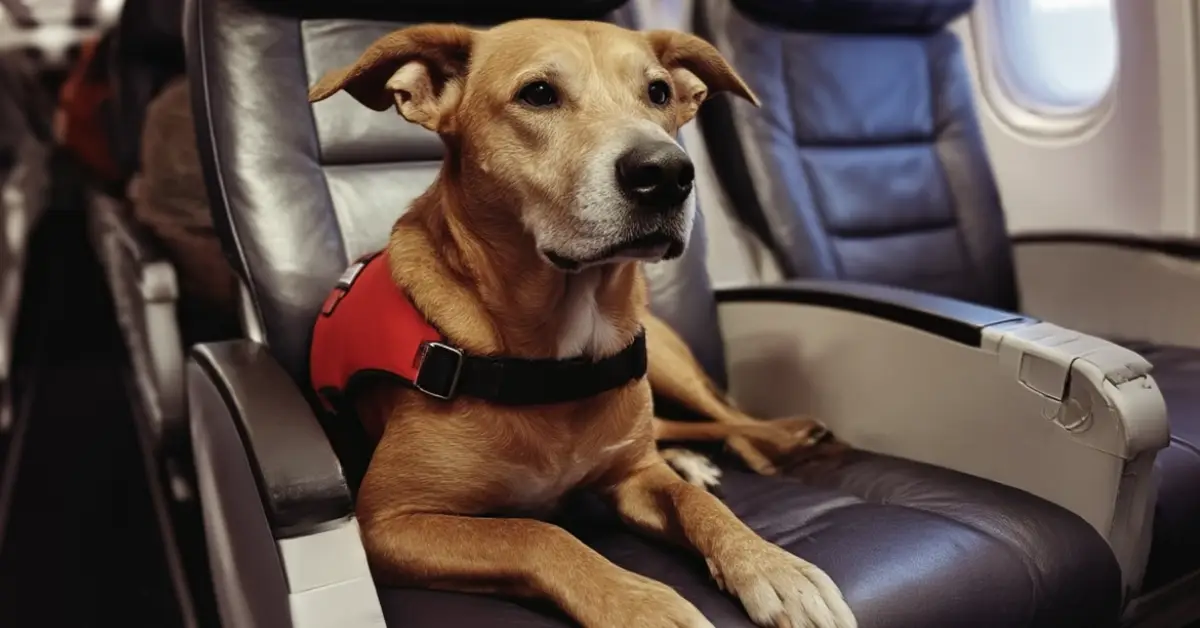
How to Fly With Your Dog Step-by-Step
Taking your dog on an airplane is easy when you know the airline’s policies for both pets and service dogs, and you come prepared. When flying with a service dog, you will have more rights than flying with a dog that’s considered a pet, but the process is similar. This guide walks you through everything […]

Read More
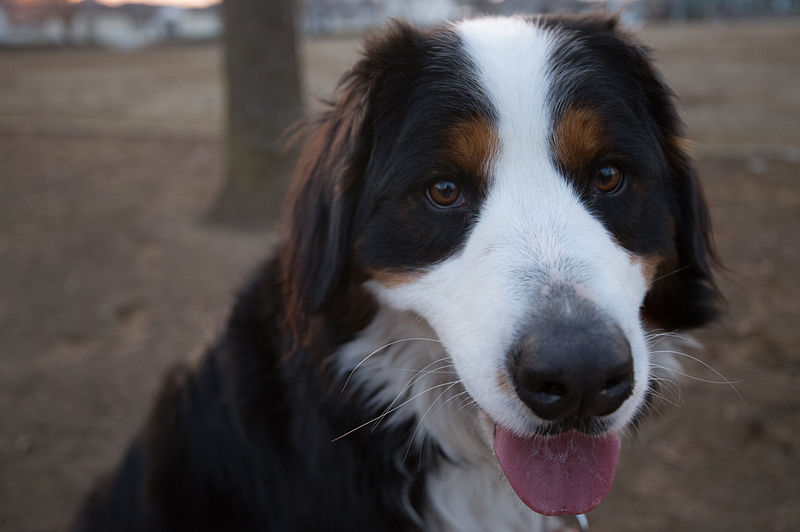
How Do I Fly With My Dog To Hawaii?
It’s travel season and Hawaii is the perfect destination for the summer. Kids are out of school, the weather is warm, and the tropical paradise known as Hawaii is a tourist destination fit for everyone. Even dogs! This blog post will give you some guidelines and information on bringing your pet to the most traveled […]

Read More
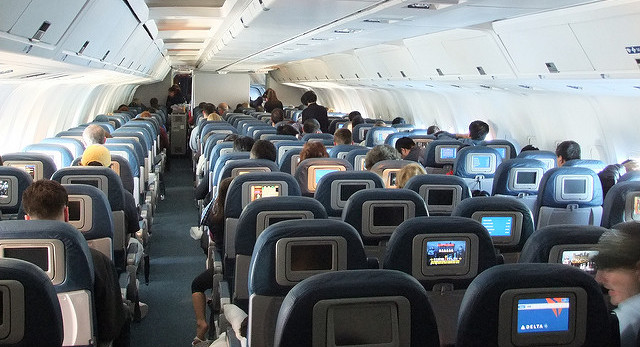
Delta Airlines – 2018 Service Dog Policy
Delta carries approximately 250,000 Service and Emotional Support Animals each year. However, as of March 01, 2018, they are tightening their policy for these working animals in an effort to reduce “misbehavior” by dogs (and other creatures). Although the carrier is required by law to admit Service animals and ESA’s into the cabin of the […]

Read More
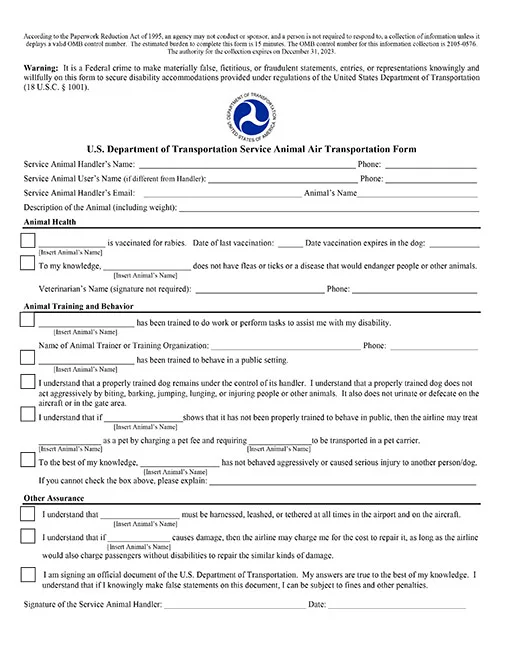
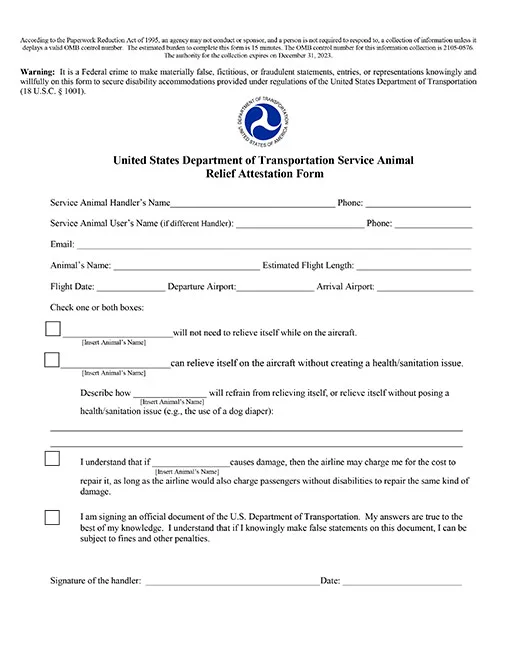



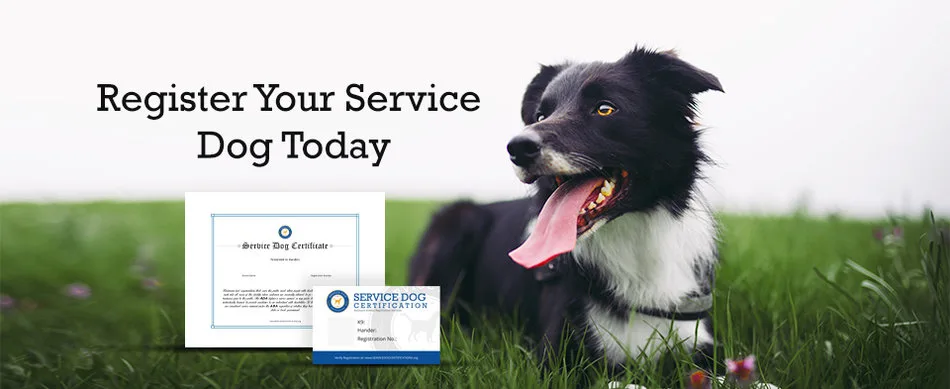
Thanks for the great info. Jasmine, our service dog is a jewel. WE are looking forward to this new adventure with her.
How did your flight go? And what breed of service dog do you have? I am planning a trip with my Siberian husky service dog and i just want some tips on how much room your dog had
Hello I have to take a flight soon. My service dog is a rednose pitbull, though since he Is a runt he is small for his breed. Can they stop us from going?
My service k9 is a very large Irish Wolfhound, who helps me with mobility. He keeps me upright and helps me up if I do fall. I need him, but he is also 200+ pounds and of course tall. Where can they accommodate us, as I don’t fly often?
Of your dog is trained to sit on floor using a spare seat which you are required to buy. For a wolfhound my dream dog, a full isle would be preferable. Yes buy 3 seats. I have to buy extra seat and I’m grateful. But my dog weighs in less than 10 pounds and my service animal is smaller yet… pricy yes, but a solution …
Service dogs cannot be denied due to weight restrictions. Airlines will even allow miniature horses as service animals and they weigh in excess of 65 lbs.
Can’t deny based on weight, but can require that the dog fit in your footprint. Most airlines will reseat you on the front row, if the seats are available. If you know your pet is too big for your footprint, you may be required to purchase a second seat. Since these rules are new, the airlines may give some adjustment for a short period. ~ Misty, Paw Paws Express (pet transport since 2014)
Horses, pigs and peacocks are not barred, as are monkeys.
I’ve a young Great Pyrenees who’s my service dog, he takes care of certain tasks for me and once he’s full grown will also provide bracing for me. He’s about 45-50 lbs now, he will be around 120-150 full grown. How would I travel with him, would I need to get a second seat so he will have more room? In what class is there more room? I’m hoping to fly to see my daughter in WA but I may have to take a train/bus combo if I can’t find a solution. I miss having more passenger trains around, there doesn’t seem to be that many around any more. I am legally blind, but with limited vision I still like to travel, having my fluffy buddy with me makes me feel more able to do so.
I’m just worried about accommodations and restrictions, plus finding somewhere he can take a potty break too.
Our Pyranees is my husband’s service dog for hearing and is a frequent flyer. They may excellent service dogs!! We typically only book bulkhead or first class seats though when traveling to provide him with more room and out of courtesy for other flyers.
Are there different rules for a service dog in training? If so what are they? (I can only find rules for Service dogs)
A service dog in training is not a service dog yet. Therefore, none of the service dog rules apply to your dog until the training is fully completed.
Is there a charge for checking pet supplies when traveling with my service dog??
Most airlines allow you to bring your pet supplies at no extra charge on board or count toward your carry on if you have a legal service animal….but each airline is different, so you’ll need to check with the one you’re flying on ~ Misty, Paw Paws Express (pet transport since 2014)
Just wanted to let others know that I just got back from flying from FL to CA and back (3 flights) with my 80+ lbs service dog on United and Frontier. He’s a rescue but appears to be a mix of boxer, pit, and mastiff. We had no issues. Both airlines were incredibly accommodating, and gave us upgraded seats for extra leg room and gave the whole row to ourselves without me asking for anything (it was of their own accord!) We easily could’ve fit with just one seat but with another 20lbs it might be pushing it for just one seat, to give an idea for size and space available. Will definitely fly with United and/or frontier in the future since they were very professional, respectful, kind, and accommodating. And as always, it was nice to hear the flight attendants walk by and say “wow I didn’t even know there was a dog there!” 🙂
That is amazing! My daughter and I are going to be flying from FL to CA in a couple months w/ our 60lb rescue pit mix. I have been stressing with all the documentation and prep work required to keep her with us in the cabin. I was very concerned about her breed mix and her size. Thank you so much for the comment.
Is medical documentation (for Mental Health reasons) regarding the need for a Service Dog in the cabin required?
There is the “Service Animal Transportation Form” that you would need to fill out and submit to your airline at least 48 hours before take off. You may find point #6 on what forms you need to fill out to fly with your service dog interesting: https://www.servicedogcertifications.org/flying-with-a-service-dog-guide/#airline-forms
We’ve been tlying for 5 plus years with our service canine a( pitbull) who has fulfilled strict mobioity assistance training. Delta airlines has instituted a ” no-pitbull” or even part pitbull irregardless of being a service canine . Is this LEGAL? As it is a direct violation per this federal DOT guideline? Past incidents with Delta were ESA’s not Service canines. I thought ” breed discrimination” was prohibited . There are many fake websites that offer counterfeit I’d, vests AND DOCTOR’s note for $150.00! Any legal action taken against these scammers? It makes it hard for us handlers in public..for when an untrained canine whose handler obtained certifications fraudulently, the public generalizes ALL service canines to behave this way.
It goes against federal law to discriminate against dog breed for a service dog. I have a pit as a service dog as well and many places to Sayibg I can’t have a pitbull me. ADA standards don’t discriminate on dog breed
What is my legal recourse in the event of being stereotyped by any public entity? I’ve been illegally queried many a times cause of my dog’s breed ( short blue nose pitbull) that I carry a indiscreet body cam, continously recording while in public of illegal/ unwarranted interaction(s) while in public. An effective tool if future civil litigation is necessary.
Is it necessary to have a therapist’s letter to fly with a psd? Does the airline ask for it?
No, the airline does not ask for a letter from a therapist. However, the Department of Transportation (DOT) has issued new rules, requiring all service dog owners to fill out specific forms before flying. The handler must complete these forms by themselves, self-certifying that their service dog is properly trained and fully vaccinated. They must add their veterinarian’s information, but neither the vet nor the therapist is required to sign it. However, if you’re unsure if you qualify for a service dog, you may get a letter from a therapist that can confirm that you suffer from an impairment that the DOT acknowledges. You may find this article on what a psychiatric service dog letter entails interesting https://esadoctors.com/how-to-get-a-psychiatric-service-dog-letter/
I have flown successfully for the past 3 years with my service dog. Same route NEWARK to London same airline twice a year for work. My dog is a Newfoundland and weighs 160lbs. My husband always travels with me so the dog sits under our feet in the bulk head seats. Never have we had an issue till today. I have all my paperwork correct, paper work from London all passed onto the airline. Now the airline is telling me he is to heavy to fly. Can they refuse me on a weight issue? I need him for stability from a serious car crash 4 years ago.
Some airlines will deny boarding if they feel the size of the service dog creates a safety issue, but that is fairly rare. It may just depend on the particular airline you’re flying with.
The form has a space that says to put the training organization and phone number, what are owner-trainers supposed to do?
If you trained your service dog yourself, then it’s acceptable to add your own name and your phone number as trainer. Self-training is a valid way of training your dog — too bad the wording on the form isn’t more clear about this. I found an article on another website you may find interesting. It explains just how to fill out the DOT forms for flying with a service dog – https://esadoctors.com/dot-service-animal-air-transportation-form/
Soo im a first time flyer with my service dog and so is he! Only think Im wondering if i can still have him in a small carrier instead of having him walk with me around huge crowds of people, just want to be for sure! Little worried that it will be stressful for my baby
Airlines will allow you to travel with your dog in a carrier. As a reminder, all service dogs must be trained to deal with crowds of people and busy places like airlines.
I have a puppy that still being trained would I have to wait until she’s full grown for her to be considered a service dog
Your service dog would need to fully complete its training before it can have the rights that a service dog has under the ADA and ACAA.
Hi, thanks for this helpful article. I have a self-trained PSD and I’m flying with her for the first time this month. Can you confirm that the airline only requires the DOT form? Or does it also require the General Public Access Test?
Thanks!
U.S. airlines will only require the DOT form. Please see this article for more info on how to complete the DOT form: https://www.servicedogcertifications.org/how-to-use-the-dots-service-animal-air-transportation-form-to-board-flights/
Thank you for this information. I’ve been looking for this and it has all the information I need in a concise way. Makes me feel better to have the information at hand.
Thank you for the compliment! If you need additional info on the paperwork required to fly with a service dog, we recommend reading this article as well: https://www.servicedogcertifications.org/how-to-use-the-dots-service-animal-air-transportation-form-to-board-flights/
I thought it was interesting that a service dog could help with alerting the owner if they have a drop or rise in blood sugar levels. I didn’t realize that was something dogs could be aware of. It makes me wonder how they are trained to recognize these kinds of things.
There are changes in the smell of a diabetic’s breath and skin that indicate a change in blood sugar. The service dog usually licks the handler incessantly when this happens.
Please educate yourself! Dogs can do a number of things. I was a dog handler for drugs. That was what he was trained for. He could not sniff out bombs or explosives. I now have a personal Canine that alerts me when I stop breathing due to my severe sleep apnea.
Side comment: I would be interested in knowing what organization you utilized or resources (if you self trained) to alert for sleep apnea. I have a 5 month old golden that I want to pursue getting training for that purpose, too. Google search nets all sorts of results but who do you trust? Thank you.
Excellent recap that’;s comprehensive, clear and helpful!
Thank you so much for the compliment! We aim to be helpful 🙂
Thank you for information recently I reserved flight in turkish airlines for my service dog and me but they reject our flight and booked another dog to fly.
They said book another date and said service dog also has weight limitations. They are not responding us properly
We encountered a man with a German Shepherd he was claiming was a lap dog. This dog could not fit oh his lap, nor in his foot space. It was a full flight, so no extra seat was available. A passenger offered to switch her first class seat and the dog still couldn’t fit. The captain felt this was unsafe for passengers and the dog and told the man he has to rebook the flight so the dog could have a seat. The man then spent 30 minutes arguing with the pilot, causing several people to miss connections .While I feel for those with disabilities, I felt in this case there was a sense of entitlement. Nobody won that battle.
The rules for these dogs states if a dog Is too large to fit on the lap of the passenger or in the footspace and no extra sets are available they must take a different flight were extra seats are available or place the dog in the cargo hole. They should not of let the man argue his point. He should have been removed and not held up the flight.
If you already know you’ll need an extra seat for my large breed service dog, is it best to book via phone? Or is there an airlines that has the options online to buy an extra ticket as room for service dog? Also, any ideas of places to practice that similar to airplane? Movie theatre?
If you’re planning on buying an extra seat for your large breed dog, you may want to call in so the airline is clear on what you are requesting and what your needs for the trip will be.
American Airlines denied my service dog to fly with me without even haven seen the dog. Based on that I have flown before other service dogs. The service dog they denied I have flown with for 8 years on different airlines and has never cause an issue. Rather the opposite, I have always received praise from passengers and the flight crew of how well behaved they are. AA also send an email to my husband and daughter that they no longer aloud to fly with their service dogs. It’s unfortunate that our family has so many health issues now having to deal with this on top is unbelievable. This happened as I made AA aware I will fly with my service dog to meet my son who is being medi-vacced by the military for a heart condition from Japan to San Diego. If anyone can help solves this I would be very grateful.
I had the same occur with my PSD on Southwest. I completed the only required form the US DOT Transportation form and even called customer service 3 days in advance to ensure that nothing had changed in the 7 months prior to this flight, when I last flew with him. I was advised that because I did not answer their question about my PSD correctly, they deemed him a ESD and denied me. I advised the supervisor that I had flown with him before with no problem 7 months prior; I was advised that it was simply, ‘first point of contact.’ ‘First point of contact,’ clearly shows that there is no consistency among this airline and sets a precedent for unanticipated failures, depending upon who the customer comes into contact with. I was offered a flight 6 hours later, a $100 voucher and a highly inappropriate comment about, how cute my PSD was, and a parting quip of: ‘Oh, he’s so cute if you need a dog sitter, I’m available,’ Despite him being completely well-behaved the entire time in line and while at the desk. They could clearly observe his behavior, which was on point as he is trained and continues daily in his PSD capacity. I wrote Sw and it took them over a month to respond with a very dismissive email regarding the matter that they don’t follow ADA guidelines and again reiterated that I was basically, SOL on the matter. I was also advised that I could buy him a pet pass for $95 each way or he could be a cargo animal…holy hell, I can’t even imagine what that would do to a PSD animal! The animal would be ruined.
We are set to fly again next week, 3 total flights in all with our PSD and we have added a vest, a PSD certification card and letter to accompany the UD DOT paperwork. I am also now prepared to answer their question appropriately. So, we will see.
While I understand that ignorant people ruined this for others, the airlines are now denying legitimate animals and their owners. I will happily complete further paperwork and full proof of his training if needed but, the inconsistent and embarrassing questioning in front of other passengers was completely unprofessional. And to ultimately be dismissed, offered ‘babysitting’ services and finally advised that if I had pulled the supervisor aside and explained my situation, it would have been fine, is absurd.
I’m now prepared beyond what is required by law, so, l do hope that Southwest is also prepared, professional and consistent.
Does anyone have experience flying from Boston to Laos with a SD? It would involve getting to Bankok, then a flight to Laos…….
Thank you.
Hi.
My son’s service dog is a German shepherd. Has anyone taken a transatlantic flight to Europe with this size dog?
Trying to find out what seats to purchase
I can’t get enough of your insightful articles and engaging stories. Thank you for sharing your passion with the world!
We appreciate your compliments!
Thanks to this article, I understood some difficult issues.
Thank you for the compliment!
Can I buy a seat for my dog to sit in next to me
Airlines generally do not allow dogs to sit in seats. You may however be able to purchase an extra seat and have the extra foots pace for your dog to lie in.